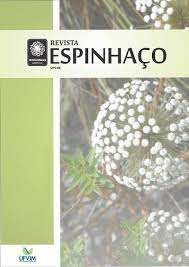Is Weather Index Insurance Sufficient for Smallholder Protection? Emerging Insights from Rainfall-Index Calibration of Maize Crop Losses in Central-West Nigeria
DOI:
https://doi.org/10.5281/zenodo.4436691Keywords:
rainfall deficit, agricultural losses, weather-index insurance, correlation indexes, NigeriaAbstract
Residual impacts from rainfall deficit and failures of traditional crop insurance to protect smallholders are resulting in economic losses threatening Post-Paris adaptation target in Nigeria. Weather index insurance is being considered as a possible pathway towards sharing farmers’ risks. This paper analyzed the reliability of rainfall indexes as proxy for calibrating grain crop losses in designing index-based insurance product for farmers in Central-West Nigeria. Results reveal that two strongest correlated rainfall indexes in the development phase of maize are the second dekad cumulative rainfall climatology and cumulative rainfall below the pre-set 440mm threshold, however it was the third dekad cumulative rainfall climatology and consecutive dry days of total rainfall < daily 2.5 mm threshold in the reproductive stage. There is an overall weak statistical relationship between maize yield and rainfall indexes calibrated in middle savannah belt of Nigeria. This study provides a firsthand empirical validation that rainfall-based indexes are though fairly promising but not sufficiently measure actual farmers’ income losses, hence should not be regarded as a standalone safety-net for protecting smallholders. Careful consideration is required in developing appropriate weather indexes for designing index-based insurance product that will fully captured food crop losses significantly attributed to rainfall deficits, thus facilitate uptake in the semi-arid savannah zone of Nigeria.
References
AWOLALA, D.O (2016) “Modelling Future Demand for Weather Index Insurance as Adaptation Instrument to Drought Risk Event in Central-West Nigeria”. Unpublished Ph.D Thesis, Department of Economics, Universite Chiekh Anta Diop Dakar, Senegal
Building Nigeria’s Response to Climate Change [BNRCC] (2011) NATIONAL ADAPTATION STRATEGY AND PLAN OF ACTION ON CLIMATE CHANGE FOR NIGERIA ( NASPA-CCN ). Ibadan, Nigeria. Available at: http://nigeriaclimatechange.org/naspa.pdf.
CARTER, M. R (2012). Next generation index insurance for smallholder farmers. In Protecting the Poor - A microinsurance compendium, ed. C. Churchill and M. Matul. Geneva: International Labour Organization with the Munich Re Foundation
CARTER, M. R, DE JANVRY, A., SADOULET, E., AND ALEXANDER, S (2014). "Index-based weather insurance for developing countries: A review of evidence and a set of propositions for up-scaling" FERDI Working Paper.
CBN (2014) Promoting Global Financial Inclusion in Africa. Forum for Discussion at a Conference organized by the Central bank of Nigeria,.
CENTRAL BANK OF NIGERIA [CBN] (2014) Capturing the ‘unbanked’ in Nigeria: Frontiering the Financial Inclusion Strategy. Forum for Discussion at a Conference organized by the Central bank of Nigeria, Abuja, Nigeria. Available at: http://dailyindependentnig.com/2014/01/capturing-unbanked-nigeria/.
FEDERAL GOVERNMENT OF NIGERIA [FGN] (2010) The 1st NV20:2020 Medium Term Implementation Plan (2010–2013). Lagos, Nigeria: Nigeria Vision 20: 2020.
FEDERAL MINISTRY OF ENVIRONMENT (FMOE) (2003). Nigeria's First National Communication under the United Nations Framework Convention on Climate Change. Federal Ministry of Environment (FMOE), Abuja, Nigeria.
FEDERAL MINISTRY OF ENVIRONMENT (FMoE) (2009). Environmental and Social Management Framework for Nigeria Public Private Partnership Program, Draft Final Report: E2283. Federal Ministry of Environment, Abuja, Nigeria.
FEDERAL MINISTRY OF AGRICULTURE AND RURAL DEVELOPMENT, FMARD (2014). Agricultural Transformation Agenda, Federal Ministry of Agriculture and Rural Development, Abuja, Nigeria
GINÉ, X., MENAND, L., TOWNSEND, R, AND VICKERY, J. (2012). “Microinsurance: A Case Study of the Indian Rainfall Index Insurance Market.” In Handbook of the Indian Economy, edited by Chetan Ghate, 167–94. New York: Oxford University Press.
GINÉ, X., TOWNSEND, R, AND VICKERY, J (2008). “Patterns of Rainfall Insurance Participation in Rural India.” World Bank Economic Review 22 (3): 539–66.
HAZELL, P., J. ANDERSON, N. BALZER, A. Hastrup Clemmensen, U. Hess, and Rispoli F (2010). The potential for scale and sustainability in weather index insurance for agriculture and rural livelihoods. Rome: International Fund for Agricultural Development and World Food Programme. 151
IBARRA, H (2010). Parametric Insurance: General Market Trends and Perspectives for the African Insurance Sector. Insurance Linked Securities. Partnerre New Solutions Inc
INTERGOVERNMENTAL PANEL ON CLIMATE CHANGE [IPCC] (2015) Climate Change 2014: Impacts, Adaptation, and Vulnerability. Working Group II Contribution to the Fifth Assessment Report of the Intergovernmental Panel on Climate Change.
INTERNATIONAL INSTITUTE FOR APPLIED SYSTEMS ANALYSIS [IIASA] (2015). Risk Policy and Vulnerability. Risk Policy and Vulnerability.
WHEELER T AND VON BRAUN J (2013). Climate Change Impacts on Global Food Security. Science 341(6145): 508–513. DOI: 10.1126/science.1239402.
WORLD BANK (2011). Nigeria Crop Weather Index Insurance Pre-Feasibility Study Report.
Downloads
Published
How to Cite
Issue
Section
License
Copyright (c) 2022 Revista Espinhaço

This work is licensed under a Creative Commons Attribution-NonCommercial-NoDerivatives 4.0 International License.


